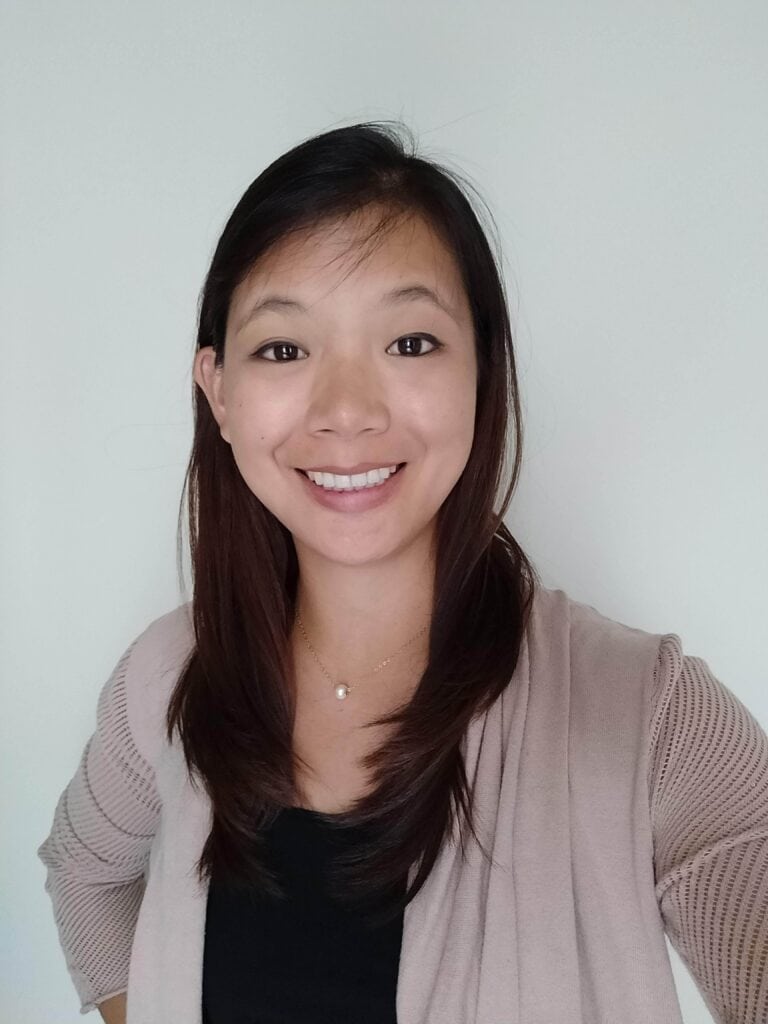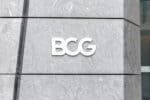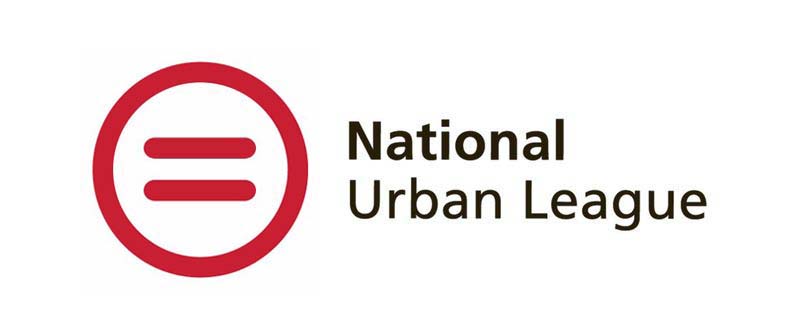Product managers are often called the CEO of the product. They handle the entire lifecycle of a product, from inception to retirement and everything in between — which requires the ability to innovate, improvise, and unite the team.
Product management is an exciting career that keeps you on your toes, and the first step to becoming one is the interview. While you may expect questions like, “What’s your greatest strength?” preparing for product manager interview questions requires more than your A-game. You’ll need your A+-game!
How to Prepare for a Product Manager Interview
We spoke to three product managers — Nandita Gupta, CPACC, accessibility product owner for accessibility insights at Microsoft; Jovana Kandic, product manager at CAKE.com; and Lynn Jane Ho, director of product management at Customer.io — to get their expert insights on how to prepare for a product manager interview and what they look for in potential product managers when they’re hiring.
One common thread from the conversations is that there is no “right way” to prepare for product manager interview questions. That’s because, as Gupta points out, “Product manager can be a very deceptive title. What it means in one company doesn’t mean the same thing at another.”
So, how do you prepare for a product manager interview?
Research Everything
Kandic stresses reviewing the job description first. “One of the most basic preparations that’s often overlooked is to start by thoroughly reading the job description since it highlights what the company is looking for in the candidate.”
You can better formulate your answers because you’ll know what skills and experiences the company is looking for and highlight them as you answer. “This is important because it helps them better articulate why they are the right fit for the job,” says Kandic.

Product Management
Step into the shoes of a product manager in this free course from Electronic Arts. Discover how to choose the right data for your presentation and learn more about key product indicators (KPIs).
Avg. Time: 1-2 hours
Skills you’ll build: Project planning, performance metrics, critical thinking, problem solving
Ho says that a large part of your prep work should include figuring out what problems the company is trying to solve. She suggests researching the company or chatting with a recruiter to learn more. You can also schedule an informational interview with a current employee. Then, try the product out to get a better idea of how it works.
It’s a lot of work, but, as Ho points out, “There are so many flavors and varying expectations and definitions of product, that success and finding a match really comes down to your interviewer and the company.”
Understand the Skill Set
Nearly every job has a required skill set candidates need to be successful in the role, and product manager is no different. However, what makes a product manager skill set different is that it requires an array of skills, so it’s critical to connect your skills to the specifics of the role. “Because the skill set is so vast, it’s all about positioning your previous experiences to appeal to the specific company and team you want to work for,” says Ho.
As an example, user experience (UX) and customer empathy are essential skills. “Product managers are expected to have a good grasp of product empathy and make customer-focused decisions,” says Gupta. But Kandic looks for “analytical, problem-solving, technical, and communication skills.”
If you’re an experienced product manager, you’ve got a foundation to build on. But what if you’re a new grad looking for an entry-level product manager role, or a student trying to nab a product manager internship?
>>MORE: Product Manager Career Path: What’s the Trajectory?

“Even if the candidate has no experience, there are ways to demonstrate their skills,” says Kandic. “Perhaps they managed some side projects or contributed to open-source software. Even ‘practice’ work can serve as a good talking point, e.g., if they developed a prototype for a new feature of an app they frequently use and can talk me through the process.”
You can also lean on your transferable skills. Gupta says project management is the number one transferable skill to mention since product managers are responsible for the product roadmap and setting milestones, just like a project manager.
Know What to Expect
While there’s no way to know exactly what questions the interviewer will ask you, you can be sure they will focus on several areas critical to product manager success.
Ho says that product manager interview questions include behavioral interview questions so the hiring manager understands how you process and respond to various situations. Since much of a product manager’s work is collaborative, there will be questions about how you collaborate and inspire the team to do their best. “Expect questions about resolving disagreements, proactively communicating, and anticipating problems,” she says.

She also points out that a large part of the interview will focus on your skills and thought process. “The focus will be on your problem-solving and decision-making skills. You’ll be asked how you gather inputs to make decisions, what your sources are, and how you creatively obtain information from reputable sources.”
Demonstrate Your Broad Knowledge
Gupta says that in addition to demonstrating your skill set, you should also be ready to talk about your knowledge of the product’s space and how the product supports the users. She points out that a product manager’s role sits in the middle of design, technology, and business, so you need to demonstrate you understand:
- The business impact of the product
- The feasibility of building a product
- What customers want from the product, and why
- How the product supports company success

The best way to do this, Gupta says, is by researching and understanding the industry the product is in. “Can you lead the interviewer with an insight they haven’t heard before? Not only would I do X, but I’d also do Y.” Your answer should highlight that you understand the product’s users, the space they work in, and how the product supports users.
Top 10 Product Manager Interview Questions (and Answers)
Another common thread in these interviews is that there are no “typical” product manager interview questions outside of “Why do you want to be a product manager?” This can make it a touch more difficult to prepare for a product manager interview, but if you’ve done your homework and understand the role and the product, you’re halfway there.
Because much of a product manager’s role involves collaboration, communication, and conflict resolution, emphasize the relevant skills and situations where you’ve used them because this is what hiring managers are looking for. “I’m trying to find ways in which the candidate applied the skills we’re looking for in practice, not just theoretical knowledge,” says Kandic.
It’s important to remember that the specifics of how you answer will vary depending on the industry the company is in and the kind of product you would manage. Being the product manager at a SaaS company is very different from product management at a company that produces pots and pans.

Venture & Business Builds
Strengthen your product management skills in this course from BCG X. Identify customer pain points, prepare a feature roadmap, and more.
Avg. Time: 5-6 hours
Skills you’ll build: System design, journey mapping, digital roadmap, competitor analysis
So, as you practice your answers, keep in mind the experience you already have and how you’ll use it on the job. You may need to lean on your transferable skills to explain how you’ll approach product management at that company and for its specific product(s).
1. How would you improve our product?
You’ll need to handle this question delicately. However, each expert had similar advice on how to answer this product manager interview question.
Ho:
For this minefield question, I would keep my response based on my personal experience, talking about problems instead of solutions. I’d share something like, “When I signed up for the product I was really excited about trying out X, but ran into X, Y, and Z, and wasn’t sure where to start. This is a much better answer than, “You should add an onboarding guide to the sign-up flow.”
I’d aim to avoid assumptions, judgements, and overly obvious points and strive to offer a viewpoint the team might not have considered, showing your unique perspective.
Kandic:
I wouldn’t try to give actual improvement suggestions, [the question is] more to gauge the candidate’s thought process. So in my answer I would try to demonstrate the steps I would take in order to improve the product. This includes explaining steps during discovery, identifying competitors, analyzing market and customer feedback, finding gaps in the current solution, defining success criteria, validating my hypothesis, story mapping, tracking metrics, etc.
Gupta:
This question comes up a lot so it’s very important to do your research.
Don’t just come up with a flashy feature. Make sure you’re tying it to the why. At the end of the day, they want to know how you’re thinking. So, make sure you’re stating all of your assumptions, talk it out loud, and ask questions.
The last thing you want to do is jump into the design. You want to ask questions like, “Who am I designing for? What problems am I solving? Am I doing XYZ?” And usually it’s a very back and forth process to get a broad understanding of what you’re trying to do before you actually do it.
Using these expert tips, here’s what an answer might sound like:
I tried signing up for the tool just to see what the process was like and was confused by the instructions. It says the tool is free and open to anyone, but when I went to register, it asked me for my company name, which was a required field. If I’m using this for personal reasons (say, coordinating a family vacation), I shouldn’t need to provide that information.
I suggest eliminating that as a required field. You can still ask for it since it’s valuable information. But making it optional could result in more people signing up for personal use instead of abandoning sign-up or putting in fake information. As they use it and see how useful it is, they may be more likely to use it professionally, resulting in more enterprise accounts that are willing to pay for the product.
2. How would you explain product management?
While product managers are responsible for “all things product,” your answer should be simple and direct. You can list a few key skills or traits a product manager needs (analytical skills, curiosity, motivation) and how you use them on the job. For example, you could say:
Product management is the intersection of data and creativity. By conducting research and using data, you uncover what the product needs to succeed. You take that information and create something that users want and that contributes to the company’s bottom line.
3. How would you describe our product to someone?
Answering this product manager interview question requires research and preparation. You want to go deeper than “It’s a pot” and describe not only what it is but how it meets a user’s needs.
While the product is a pot, it’s more than “just a pot.” It’s multi-functional, giving the user options in the kitchen. It’s the perfect size for making pasta, but the insert gives chefs the option to use the pot as a double boiler or to steam vegetables. And the glass lid lets cooks peek inside without lifting the lid and interrupting the cooking process.
4. How do you develop product strategy?
This is a chance for you to talk about your process. Quickly walk the interviewer through how you take a product from concept to reality. Keep the answer high-level, as the interviewer will likely ask additional questions if they want more details.
I start by talking to customers and looking at their feedback to identify what they want or need to help me understand what challenges they’re facing and how our product can solve them. Then I decide what the product or feature will look like and start working with other teams to develop the concepts and timelines for product development.
After that, I collaborate with everyone to help them stay on target and meet their goals, gathering feedback along the way and adjusting as necessary. Once the product launches, I continually monitor data and feedback to see if we need to make additional tweaks and whether we can eliminate any older products or features.
>>MORE: Product Manager Career Path: What’s the Trajectory?
5. What is a product you can’t live without, and why?
There is no one right way to answer this product manager interview question because it is truly about your personal tastes! That said, keep two principles in mind as you answer.
First, structure your answer so that it not only answers the questions but also gives the hiring manager insights into how you approach products. For example, if the one product you can’t live without is your electric toothbrush, your answer should include what problem it’s helping you solve. Is it making your dental check-ups easier because it’s doing a better job brushing your teeth? Are you finally brushing your teeth for two minutes, thanks to the built-in timer?
Second, try not to pick a competing product. While you could frame your answer as “and that’s why I want to work here — to make your product as good as the other one,” you risk offending the interviewer. A competing product might be something you can’t live without, but this is a case where honesty is probably not the best policy.
6. What’s the best idea you ever had as a product manager? And the worst?
Asking about your best and worst ideas is similar to asking about your strengths and weaknesses. The interviewer is trying to measure how well you know yourself and can objectively measure your performance.
So, frame your answer as if you were asked about your strengths and weaknesses. When talking about your best idea, explain why it was the best idea. Did it increase sales? Improve efficiency? What was the positive impact it had on the product and company?
When talking about the worst idea, you should speak honestly and candidly about it. Take responsibility for the idea and then explain why it didn’t succeed. Was the timeline unrealistic? Was the feature too ambitious? Did the customers not want or need the product?
Then talk about what you learned and how that makes you a better product manager. Did you learn to do more detailed research? Communicate more with other contributors?
7. How do you prioritize which features to build?
Asking how you prioritize tasks is a common interview question. But asking how you prioritize which features to build gets at the heart of being a product manager. It’s impossible to tackle them all at once, so the hiring manager wants to know how you pick and choose what’s first and what’s last.
Here’s how the experts approach feature prioritization:
Ho:
I use the rocks and pebbles approach. Each month or quarter has a “headliner” — a larger project that tackles a significant business opportunity or customer pain point. Then, around and between those, we’ll make more minor changes. To prioritize the large projects and smaller opportunities, consider impact, risk, and timing.
For timing, I’m looking out for upcoming events, a break between large changes, a good onboarding project for new team members, etc, that might push a project up that usually wouldn’t be considered. Finally, we review the roadmap frequently (i.e., after every project) to see if any new information could change the priorities.
Kandic:
It depends on the criteria we use, what’s the target group, if it’s a mature or a new product, resources and time available, etc. But generally speaking, it’s important to understand who the users are, what are their needs, what problems are they solving using our product and what problems will provide the most value if solved.
We collect ideas both internally and externally, categorize and analyze feedback and identify new business opportunities. We can map these opportunities with our business goals (increase retention, break into new market segments, etc.), so we look for features that fit most into those goals. We also take into consideration their complexity, and see based on the time and resources we have what would be the optimal features to build.
Gupta:
It depends on your business strategies, feasibility, and customer needs.
Let’s say I’ve got three features on my backlog and I’m trying to figure out what should go next. Sometimes there’s a resource constraint. Sometimes there’s a feasibility issue, like something else is broken and it’s going to take X long to fix it so it has to wait because we literally can’t do it.
The best answer is high-level: what’s the impact? You don’t want to do something because it’s flashy or new. Yes, the users really need it but you have to have a way of articulating the impact.
For example, if I’ve got one feature which is trying to fix a user experience issue and it impacts 200 users versus I’ve got one fix that only impacts five users, but that fix is about compliance or security, it certainly becomes more important.
As you can see, there’s more than one way to prioritize features!
So, you could talk about how you evaluate each task on its impact, urgency, or cost, then discuss how you use that to prioritize features. You might say that urgency always outweighs impact and explain why that’s your philosophy.
8. How do you figure out what customers want and need?
Similar to asking how you prioritize tasks, this question gets at how you start the product life cycle.
While part of your answer should include talking to users and gathering their feedback, don’t stop there. Also talk about how you would go to other departments and see what they think customers want or need.
For example, you might contact customer service and see what kind of complaints or feedback they’re hearing. You may spot a pattern that tells you this feature is essential or missing from the product.

Strategic & Experience Design
Take your user design skills to the next level in this free course from BCG. Research and create user personas and use your findings to design a new user experience.
Avg. Time: 3-4 hours
Skills you’ll build: Ideation, design management, visual design, concept development
9. How would you deal with stakeholders disagreeing about which features should be built or prioritized?
Though it’s up to the product manager to prioritize which features come first, the reality of the job is that sometimes, you have to negotiate a compromise.
This product manager interview question is probing how you use your conflict-management skills as well as how you get the entire team to back up your plan. So, talk about how you negotiate, compromise, and get everyone to rally around the solution.
Disagreement around which features to build sometimes arises because people can’t always see beyond their department or opinions. My job is to help everyone understand that while all features are important, we just don’t have the time or resources to build them all at once.
How do I do that? By explaining why I’ve prioritized the features the way that I have. That usually comes down to explaining that we’ll get the most bang for our buck as quickly as possible.
10. What’s the difference between a product manager and a project manager?
If it sounds like a product manager is another way to say “project manager,” you’re not alone — the terms often get confused. As Gupta notes, product managers use project management skills. But a product manager is not the same as a project manager, and interviewers may want to make sure you know the difference. Your answer can be a simple explanation, and you could even include specific examples of how the two might work together at a company.
A product manager creates the roadmap for a product, setting up the timeline, goals, and individual steps that need to happen to bring a feature or product to life. A project manager coordinates and manages each of the individual projects that contribute to the product roadmap.
Bonus Product Manager Interview Question and Answer From an Expert
This is Kandic’s favorite product manager interview question: How would you lead a feature from its idea to release?
Here’s what she’s looking for in an answer:
This can be answered hypothetically if you’ve never had experience building a feature. It’s great because it’s multifaceted and allows me to see through the candidate’s thought process in different phases, mainly discovery and delivery. We cover analysis of customer feedback or other inputs, their technical skill, knowledge of processes, roadmapping and aligning tasks and requirements, collaboration with other team members, etc.
Prepped and Ready
Glassdoor rated product manager one of the best jobs of 2022 at number 10, with a median base salary of $125,317, making it a popular career choice for many. Preparing for product manager interview questions with our expert tips can help ensure you’re a top choice for the role.
But because it’s so popular, you should be prepared to take a product manager-adjacent job (like working in user experience) instead of a product manager role. Even though you won’t be a product manager, you can still build your product manager skills.
“Especially in your first few jobs, be open to roles adjacent to product management and apply a product-oriented mindset in any role you assume,” says Ho. “Advocate for the customer, make decisions based on data, and use stories and data to influence. This way, you’ll still be developing product management skills while positioning yourself well for when a product manager role becomes available.”
No matter what career you’re pursuing, enrolling in a free Forage virtual job simulation can help you build the real-world skills you’ll need to get the job done. What’s more, when you complete a job simulation, you’ll unlock a free resume snippet you can customize and talking points to help you tackle the interview.
Image credit: Canva


